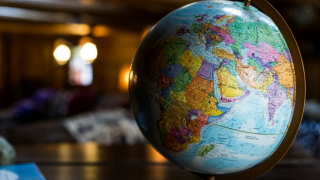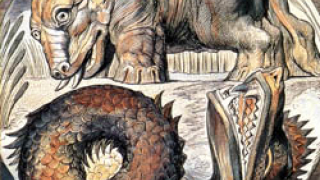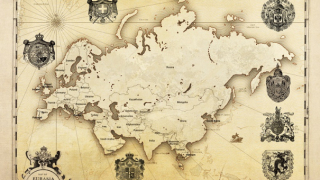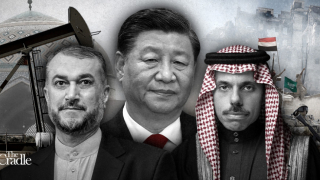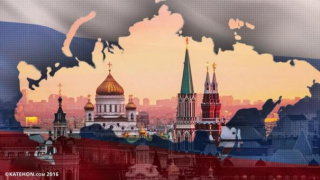The Ontological Foundation of Eurasia
28.08.2020
The term Eurasia is not just a geographical concept as the western geographers of the twentieth century have speculated. It is purely ideological and civilizational idea, which demarcates the Great Eurasian communities across the cultural, social and ideological sphere. The topological syntax of the term Eurasia refers to the spiritual, cultural and historical connection between the European and Asian communities. Although, throughout history the concept of Eurasia was the content of debate and discussion but since the dawn of 20th century the idea has attracted significant courtesy in geopolitics. Historically, Eur-Asia was a single meta-continent, which hosted various prominent civilizations of the antiquity including Chinese, Mesopotamian and Indus Valley civilization. Hence, in pure ontological background, the term Eurasia defines and illustrates the lost Indo-European collective identity.
Till the dawn of the nineteenth century, the concept of Eurasia oscillated between the meta-geographical concepts of the Greater Europe and Greater Asia. Besides, the multi-ethnic and multi-cultural communities living across the Great Eurasian space can only be understood in the perspective of the ‘Imagined Communities’. In contrast, the huge and continuous landmass of the Eurasia represents a distinctive civilization, which consist of a deep structural patterns. However, Eurasia as a geographical and civilizational phenomenon encompasses the ontological contours of historical, political, economic and social association. Therefore, from the perspective of geography, Eurasia as the continental idea need to be re-examined, re-imagined, and re-mythologized. It is because, in the classical geography, the concept of continent was the subject of physical and human geography by overlooking other important aspects such as culture, ethnicity, religion and civilization.
For centuries, the continental orientation of Eurasia has been under stipulation because of the identitarian ambiguity. Moreover, the ethnic and cultural fermentation of the Eurasian region is complex and diverse along the demographic and topographic landscape.
Anthropologically, the Eurasian region represents a unique pattern of spiritual wholeness, which is the product of religious homogeneity and cultural hybridity. Moreover, the concept of Eurasia as a huge continuous landmass portrays an alternative history of major civilizations i:e Turk, Chinese, Persian, Slavic and Mongols. Similarly, the Eurasian demography reflects the Russo-Turkish-Mongolian-Chinese union as the real custodians of Eurasia.
Convincingly, for the anthropologists and cultural historians, the civilizational hybridity of Eurasia was the result of cultural and ethnic transfiguration from the marginal zones of Asia and Europe. Especially, the Heartland, the Eurasian interior that served as the crossroad for four major civilizations of the Eurasian steppes. As a matter of fact, it can be said that the cultural geography of the Eurasian region is deeply rooted in the richness of physical geography, which makes it exceptional. In this respect; if Eurasia is the largest natural fortress on earth then, it is also the greatest cultural fortress on earth that have assimilated and diffused various cultural communities into its womb. Basically, it was the ‘Inner Asia’, Mackinder’s Heartland, which had nurtured distinctive cultural standards that became the dominant lifeway for the Outer-Eurasia.
For various historians, it is the Heartland, which splits the continental Eurasia into two major portions: the inner Eurasia, which has provided trade routes to cultural communities and the outer Eurasia, which has provided technology and capital. In the context of broad geographical division, the Eurasian region consist of Rimland, which refers to the peripheral zones that includes area from the Eastern Europe to Himalayas and beyond. Moreover, with such a great physical topography, the continental Eurasia has become an ‘Ideology’. The ideology associated with the continental Eurasia is known as Eurasianism, which was pioneered by various Russian scholars, literary writers and historians during the early modern era.
Mackinder besides being an over-determinist geopolitician, believed that geography and environment could be overcome, if we treat these subjects with the greatest knowledge and respect. Perhaps, the early Eurasianists such as Nikolay Danilevsky, Nikolai Berdyaev, Dostoevsky, and Lev Gumilev were over-determinist concerning Eurasia. Basically, it is the conservative ideology originated out of the ‘closed system’, which in Mackinder’s view is the foundation of the dry land. This dry land is a huge landmass, which transforms into vast cape, overlapping the English Channel and Iberian Peninsula and springs out to West Africa by engulfing the Indian Ocean.
Similarly, during the early modern era, the Central Asian region stretching from the Caspian Basin to Altay Mountains was known as Turkestan, which was under the rule of powerful Changazid Khanates. The Turkestan region was divided into two major portions: Eastern and Western Turkestan—And, it was during the early eighteenth century, Imperial Russia annexed western Turkestan by annexing the most powerful khanate of Kokand and establishing protectorate over Khanate of Khiva and Bukhara. Perhaps, the eighteenth century’s
Eurasian history was marked by the territorial expansion of imperial Russia, which includes the large swathes of Central Eurasia: Caucasus and Central Asia. In addition, within a span of century, the diverse ethnic and cultural communities across the central Eurasia had transfigured themselves as a result of socio-political assimilation with Russia.
As an illustration, in the ontological domain the concept of Eurasia as a separate continent is an ideological imagination, which is characterized by cultural elements, common historical remembrances and collective identity. Since the Medieval Ages, the Eurasian realm endured a perpetual transformation because of the nomadic invasions from the inner Asia—perhaps, these invasions marked a permanent spot on Eurasian collective memory. For instance, the medieval epoch great Mongol Yoke over the northern and southern Eurasia has paved the way for cultural interaction. Principally, it was the assimilation of alien cultures, languages and traditions that transformed the Eurasian identity into distinctive complex character.


